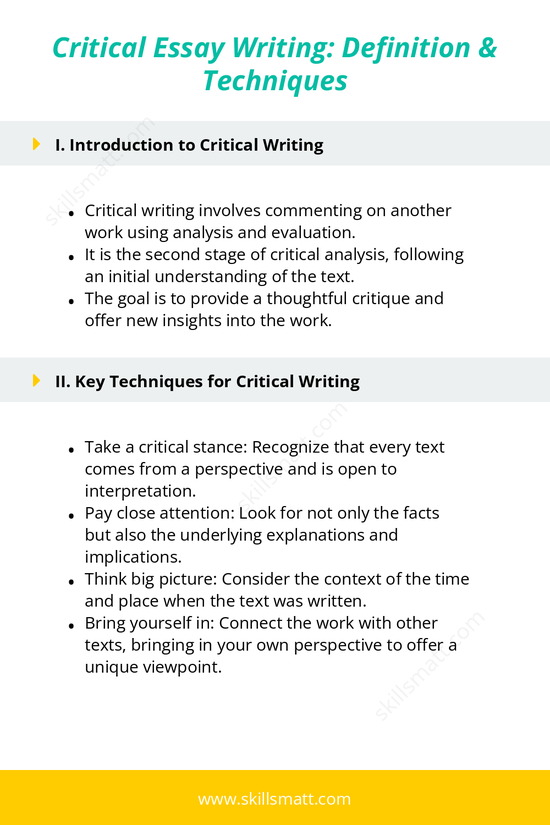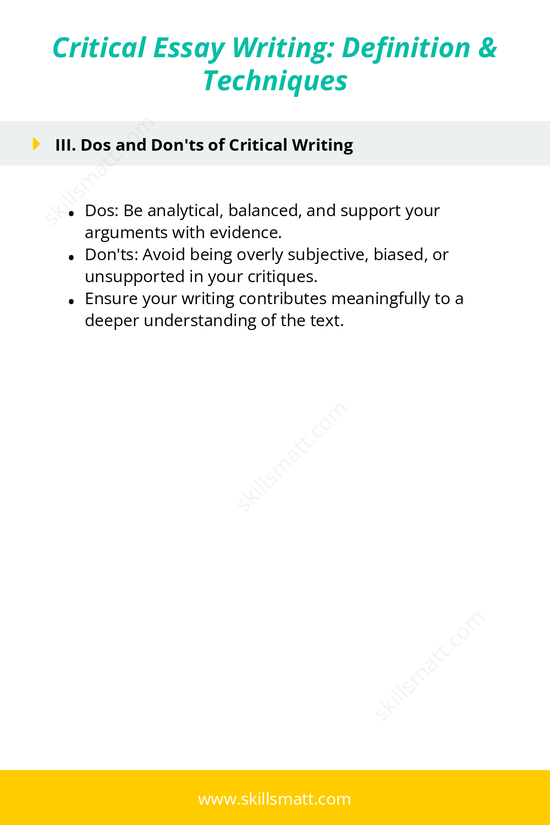Critical Essay Writing: Definition & Techniques
I. Introduction to Critical Writing
- Critical writing involves commenting on another work using analysis and evaluation: Critical writing engages with a text by offering a thoughtful critique, focusing on both its strengths and weaknesses.
- It is the second stage of critical analysis, following an initial understanding of the text: Once you comprehend the work, critical writing allows you to reflect upon it, evaluate its effectiveness, and offer your insights.
- The goal is to provide a thoughtful critique and offer new insights into the work: Critical writing aims to contribute to a deeper understanding of the work and may challenge conventional interpretations.
II. Key Techniques for Critical Writing
- Take a critical stance: Recognize that every text comes from a perspective and is open to interpretation. Consider the author’s intent, biases, and potential gaps in the work.
- Pay close attention: Don’t just look at the facts; also examine the underlying explanations, assumptions, and implications behind the text.
- Think big picture: Consider the context of the time and place when the text was written. Understanding its historical, cultural, or social backdrop is crucial for effective analysis.
- Bring yourself in: Connect the work with other texts or ideas, bringing in your own perspective to offer a unique viewpoint and enhance the analysis.
III. Dos and Don'ts of Critical Writing
- Dos: Be analytical, balanced, and support your arguments with evidence. A strong critical essay presents reasoned arguments and uses evidence to back up the analysis.
- Don'ts: Avoid being overly subjective, biased, or unsupported in your critiques. Critical writing should be grounded in objective analysis rather than personal feelings or unfounded opinions.
- Ensure your writing contributes meaningfully to a deeper understanding of the text: Always aim to enrich the reader’s understanding of the work with well-reasoned arguments and insights.


